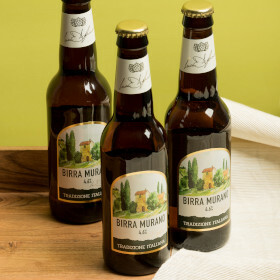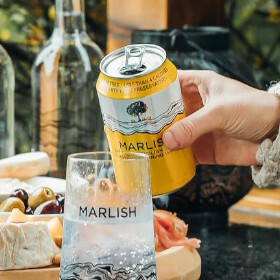Natural Wine: What, how and why?
Posted by Tamsin on 14th Nov 2024
Natural wine has surged in popularity, celebrated by sommeliers, wine connoisseurs, and eco-conscious drinkers alike. But what exactly is natural wine, and how does it differ from traditional wines? Below, we explore the distinctive charm of natural wine, its defining terms, and introduce some unique offerings from Santa Julia, a renowned winery in Mendoza, Argentina.
What is Natural Wine?
Natural wine is made from fermented grape juice with minimal intervention by the winemaker. This means that, unlike conventional wines, natural wines involve fewer additives and processing steps, allowing the grapes’ innate flavours to shine. Grapes used for natural wines are often grown organically or biodynamically, and the winemaking process avoids or minimizes chemical additions and technological manipulation, such as filtration or extensive sulphite use.
The philosophy behind natural wine aims to let nature take the lead, resulting in a product that embodies the terroir (the natural environment in which the wine is produced) more authentically. These wines are often referred to as "alive," evolving both in the bottle and in the glass as you drink them.
How is Natural Wine Different from Conventional Wine?
Traditional winemaking methods often include various additives to achieve a particular taste, consistency, or shelf life. These may include sulphites, which act as preservatives, stabilizing agents, or artificial yeast strains to speed up fermentation and enhance predictability in taste. Conventional wines are also frequently filtered and fined (a clarification process to remove impurities), which can make the wine’s appearance crystal-clear but may strip out subtle flavours.
Natural wine, on the other hand, celebrates inconsistency and variability. The result is often a wine that tastes more robust, slightly unpredictable, and sometimes even a bit funky—a quality highly prized by fans of natural wine. The flavours reflect the year’s harvest, the soil, and the climate more acutely, often resulting in unique notes that change with every sip.
Key Terms in Natural Wine
To fully appreciate natural wines, it’s helpful to understand some key terminology:
Orange Wine: Despite the name, orange wine isn’t made from oranges. It refers to a white wine made using a red wine technique: the grape skins are left in contact with the juice during fermentation, resulting in a rich, amber-coloured wine with intense flavours and tannins (typically only found in red wine).
Clarete: A traditional Spanish style, clarete is neither a red nor a rosé but a blend of both. It’s created by co-fermenting red and white grapes, producing a wine that’s lighter than a red but more complex than a rosé. Claretes are known for their vibrant colours and balanced acidity.
Pet-Nat (Pétillant Naturel): Pét-Nat is short for “pétillant naturel,” a French term meaning “naturally sparkling.” This type of wine is made using a method called "ancestral," where the wine undergoes only one fermentation process and is bottled before it’s fully finished, creating a natural sparkle. Pet-Nat wines are often slightly cloudy and lightly bubbly, with a fun, unpredictable flavour profile.
Unfiltered/Unfined: Natural wines are often unfiltered and unfined, meaning they skip the final clarification steps that remove suspended particles. This results in a hazy appearance and a fuller mouthfeel, as well as a retention of complex flavours.
Sulphites: Sulphites are compounds that occur naturally in all wines as a by product of fermentation. They’re present in trace amounts in nearly every bottle, even if no additional sulphites are added by the winemaker. Sulphites play an important role as a preservative, protecting wine from oxidation (which can lead to spoilage) and bacterial contamination. For this reason, many conventional winemakers add extra sulphites to stabilise the wine and ensure consistent flavour and longevity, but 'Natural' winemakers usually forgo this step.
The Santa Julia Natural Wine Range: Bold Expressions of Mendoza’s Terroir
Santa Julia, a winery in Mendoza, Argentina, is recognized for producing some of the region’s most exciting natural wines. Embracing sustainable practices, Santa Julia’s wines reflect Mendoza’s unique terroir and climate. Among their standout offerings are the 'Vinos Naturales' range including an orange Chardonnay, a Clarete, and a Pét-Nat, each one a bold representation of the natural wine movement.
Santa Julia Vinos Naturales Orange Chardonnay
This Orange Chardonnay is a natural take on a popular varietal, bringing out a whole new side of Chardonnay’s personality. The extended skin contact gives the wine a beautiful amber hue and enhances the flavours, offering notes of dried apricots, citrus zest, and a hint of honeyed spice. The texture is fuller, with a slight tannic grip that’s unusual for a white wine but characteristic of orange wines. This wine pairs beautifully with dishes that can match its boldness, like roasted vegetables, grilled seafood, or spicy Asian cuisine.
Santa Julia Vinos Naturales Clarete
Santa Julia’s Clarete is a fantastic introduction to this lesser-known style. With red and white grapes fermented together, in this case aromatic Torrontes and juicy Malbec, the result is a wine that showcases juicy, red fruit notes but is also refreshing and easy-drinking. There’s a natural acidity that makes it perfect for sunny days and a range of foods, from charcuterie to light pasta dishes. This wine is meant to be enjoyed young and embodies a sense of adventure, with a vibrant hue and light body that make it an excellent choice for both red and rosé wine lovers.
Santa Julia Vinos Naturales Pét-Nat
Santa Julia’s Pét-Nat is a delightful, naturally sparkling wine that surprises and delights with each sip. Because it undergoes only one fermentation process and is bottled before that process completes, it has a fun, slightly fizzy character. Expect lively notes of apple, pear, and a hint of brioche from the natural yeast. This unfiltered wine has a cloudy appearance, adding to its charm and unique look in the glass. Santa Julia’s Pet-Nat is a great choice for celebrations or as an aperitif; it pairs wonderfully with light appetizers and fresh salads.
For anyone curious about natural wine, Santa Julia’s Vinos Naturales selection is an inviting starting point. Each bottle offers a distinct, memorable experience that celebrates the diversity of wine in its most natural form. So, next time you’re looking to try something different, consider Santa Julia’s range of natural wines and enjoy a taste of Mendoza’s terroir in its purest, most exciting form.









